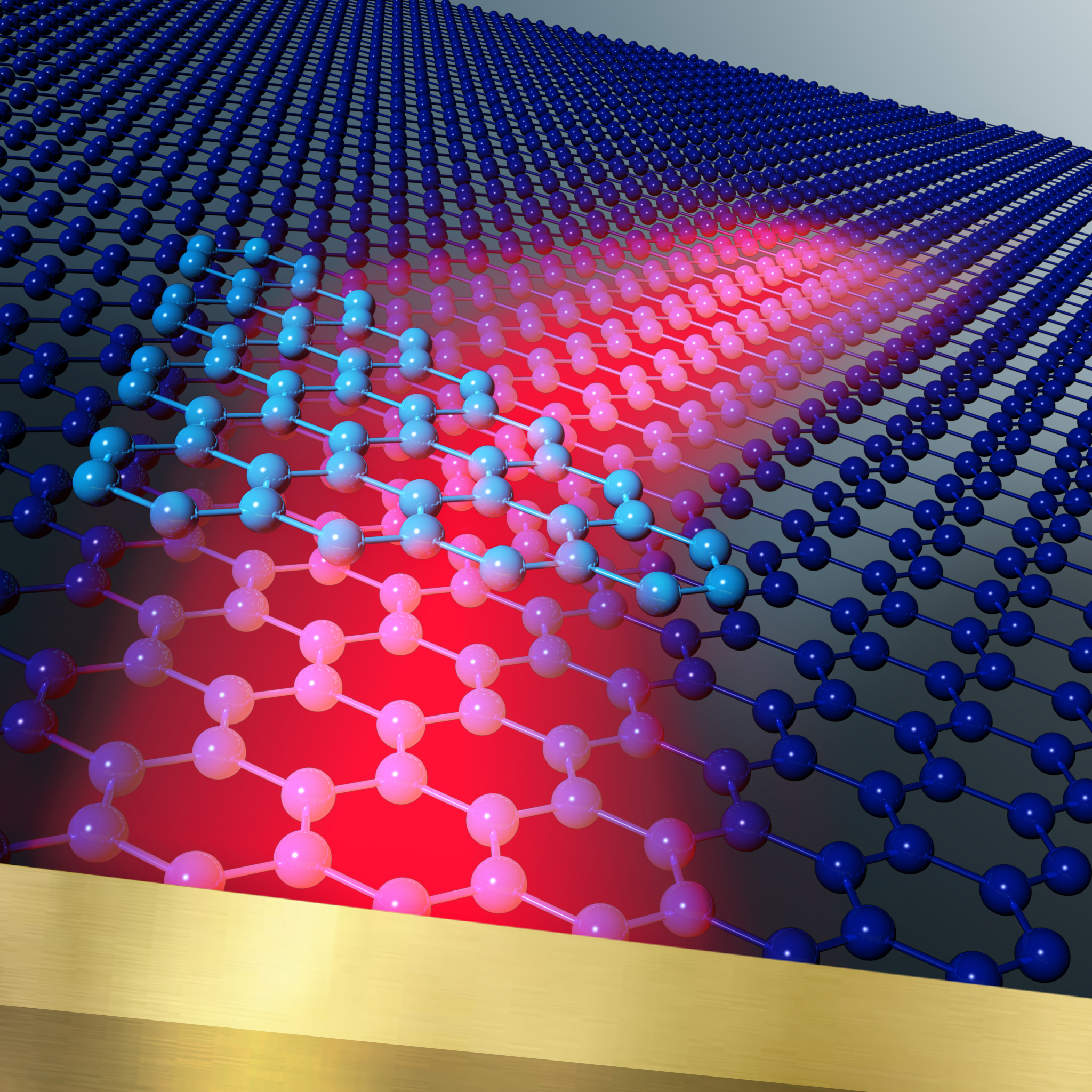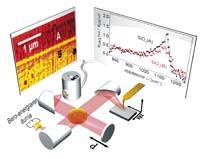nanoGUNE develops a compressed light diffusion system on the surface of graphene
2014/05/26 Carton Virto, Eider - Elhuyar Zientzia Iturria: Elhuyar aldizkaria

Optical circuits and devices could process and compute information much faster than electronic devices. But one of the limits is in the light itself. According to Ikerbasque researcher at the nanoGUNE research centre in Donostia, Rainer Hillenbrand “needs too much space.” In fact, for light to expand it needs at least half of its wavelength space, much larger than the basic electronic components of the latest generation of our computers. That is why the challenge arises to compress the light and control its expansion to nanoscale through a certain material.
In nanoGUNE they responded to this challenge by developing a system based on antennas that will allow to start and control the “compressed” light that propagates through graphene.
This “compressed” light is a surface plasmon. They are generated from the interaction of conductive electrons with the light of a certain wavelength, which propagate through the surface of the material, with a very small wavelength. In the case of graphene, the wavelength of the light trapped in a layer of graphene can be significantly reduced by using surface graphene plasmons: 10-100 times with respect to the light that expands in free space. This allows the light that propagates through graphene to occupy much less space and that, with the idea of controlling it, optical nanodevices can be designed.
Researchers from NanoGUNE, ICFO de Barcelona and Graphenea, led by Rainer Hillenbrand, have shown that the antenna concept used for radio waves can be a good solution for the creation and control of compressed light. In an article published by the journal Science, researchers have shown that gold bars of nanometric size (which act as light antennas) embedded in graphene can absorb infrared light, making it a plasmon of graphene, like a radio antenna, in a metal cable, transforms the radio waves into electromagnetic waves. "A versatile technology platform based on resonating optical antennas has been presented to initiate and control the expansion of graphene plasmons. This discovery is an important step in the circuits of graphene plasmons," explains Hillenbrand.
NanoGUNE's own research team discovered in 2012 the existence of graphene plasmons. The researchers considered it more appropriate than metallic plasmons for the development of a plasmon based technology, due to the behavior of conductive electrons in graphene, due to the greater compression capacity of light. But in 2012 they were not able to create graphene plasmons.
Now, nanoGUNE researchers have taken a further step in the creation of graphene plasmons and in the commissioning and control of their dissemination in a simple way. The main advantages of the platform presented would be that only an optical excitation is sufficient to generate graphene plasmons, with the compact device, and that the plasmon phase and the wave front can be controlled directly, adapting the geometry of the antennas. In NanoGUNE, Pablo Alonso-González noted that “this is basic for developing applications based on the focus and direction of light.”
The researcher of the University of Manchester, Alexander Grigorenko, has highlighted the platform presented by nanoGUNE on the web Physicsworld, with the following words: “This work is more than a significant scientific achievement; (...) I would say that in the world only two laboratories can do something similar to what they have done.”

Gai honi buruzko eduki gehiago
Elhuyarrek garatutako teknologia





_galeria.jpg)